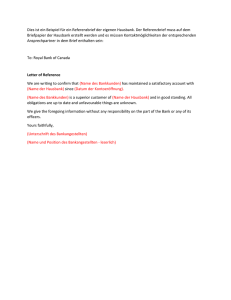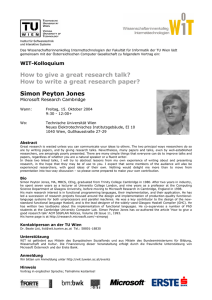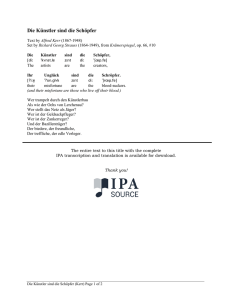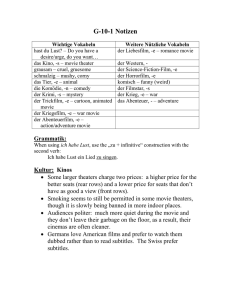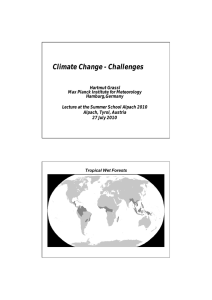HIV-Pathogenese
Werbung
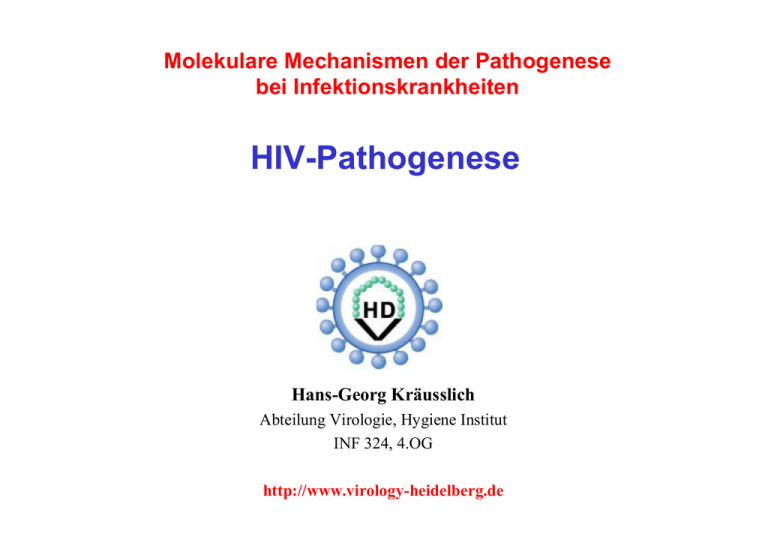
Molekulare Mechanismen der Pathogenese bei Infektionskrankheiten HIV-Pathogenese Hans-Georg Kräusslich Abteilung Virologie, Hygiene Institut INF 324, 4.OG http://www.virology-heidelberg.de Eine Pandemie der Gegenwart Entfernter Donner Morbidity and Mortality Weekly Report, 5.6.1981 Pneumocystis Pneumonia --- Los Angeles In the period October 1980-May 1981, 5 young men, all active homosexuals, were treated for biopsy-confirmed Pneumocystis carinii pneumonia at 3 different hospitals in Los Angeles, California. Two of the patients died. 15-39% All 5 patients had 5-15% laboratory-confirmed previous or current cytomegalovirus 1-5% Prävalenz in (CMV) infection and candidal mucosal0,5-1% infection. Case reports der 0,1-0,5% of these patients follow....... Bevölkerung <0,1% unbekannt Heute: 5 Millionen Infektionen pro Jahr 3 Millionen Tote pro Jahr 42 Millionen HIV-Infizierte weltweit 4,9 Millionen Neuinfektionen pro Jahr 3 Millionen Tote pro Jahr 25 Millionen AIDS-Tote weltweit Zahlen schwirrten ihm durch das Gedächtnis, und er sagte sich, dass die etwa dreißig großen Pestepidemien der Geschichte an die hundert Millionen Tote gefordert hatten. Aber was bedeuten hundert Millionen Tote?.... Da ein toter Mensch dann etwas wert ist, wenn man ihn tot gesehen hat, sind hundert Millionen über die Geschichte verstreute Leichen nichts als Rauch und Einbildung. Albert Camus, „Die Pest“ 30. Januar 2007, 9.00-10.00: ~560 Menschen haben sich neu mit HIV infiziert ~350 Menschen sind an AIDS gestorben Humanes Immundefizienzvirus Umhüllte RNA-Viren HIV-1 2 Typen (HIV-1, HIV-2) mit zahlreichen Subtypen Reverse Transkriptase im Virus RNA=>DNA Integration ins Wirtsgenom ss + Strang, ca. 9 000 Nukleotide Relativ instabil HIV is a monkey-derived virus HIV-1 and HIV-2 are caused by independent transmissions from chimpanzee and sooty mangabey, respectively. HIV-1 type O is derived from a related gorilla virus. Three independent monkey to human transmissions (from chimpanzees) caused epidemics with M-, N-, and Ogroup HIV-1. Zentrale Stellung der CD4+ T-Zellen für die erworbene Immunität HIV infiziert CD4-positive Zellen, die den Korezeptor CCR5 oder CXCR4 tragen Primary HIV-infection Unspezific symptoms 1 to 3 weeks after exposition similar to infectious mononucleosis ¾ p24-Antigen detectable by 4 weeks p.i. ¾ HIV-genome detectable by 4 weeks p.i. ¾ Seroconversion 3 to 12 weeks p.i. ¾ Strong reduction in virus load with immune response Maculopapillary exanthema in primary HIV-infection Course of HIV infection infection seroconversion minor or no symptoms disease markes Set point Prognosis!! ARC / AIDS virus load CD4+ PBL immune response antibodies to HIV env HIV-specific CTL antibodies to p24 4-8 weeks up to 12 years 2-3 years Die Wahrscheinlichkeit, AIDS innerhalb von drei Jahren zu entwickeln % CD4 -Zellen/µl >750 501-750 351-500 201-350 <200 100 80 60 40 20 0 >30K >55K 10K-30K 20K-55K 3K-10K 7K-20K 501-3K 1500-7K <500 VL bDNA <1500 VL PCR AIDS: Opportunistic infections CMV-Retinitis Kaposi-Sarkoma Cytomegalovirus Interstitial Pneumonia: Pneumocystis carinii Human Herpesvirus 8 Oral Leukoplakia Epstein-Barr-Virus Oral Candidiasis Candida albicans Der Verlauf der HIV-Infektion wird von Virusreplikation und Immunantwort bestimmt Rolle von Antikörpern in der HIV-Infektion Störungen der zellulären Immunantwort bei HIV-Infektion CD4+-Zellen: Zytolyse (virus- und CTL-induziert) Störung der Proliferation (IL-2; IL-2 Rezeptor) Verminderte Antigen-spezifische Antwort CD4-Oberflächenexpression lösliches HIV-env bindet an CD4 und blockiert sterisch CTLs: Reduktion der Zellzahl Fehlende CD4+ Helferzellen Spätphase der Infektion Infektion und Lyse der Vorläuferzellen Monozyten/MO: Nur zum kleinen Teil infiziert Gestörte Chemotaxis, Fc-Rezeptorfunktion, Komplement-vermittelte Elimination vermutlich durch lösliches, virales Antigen B-Zellen: Polyklonale Aktivierung (lösl. virales Antigen) Autoantikörper NK-Zellen: Geringe Zytotoxizität (fehlende Helferzellen; Zytotoxizität ist IL-2 abhängig) Der Eisberg Plasma (2% der Viruslast) Lymphatisches Gewebe (98% der Viruslast) Viruslast Viral reservoirs and plasma viremia Activated T cell 106 Resting Tcell (G1) Quiescent Tcell (Go) HAART Viral RNA (copies/ml) 105 Therapy can dramaticallymacrophage reduce virusDendritic load in cell almost all patients under therapy t1/2: 24h 104 Therapy can be sucessful for several years 103 Drug therapy cannot the virus from latently t1/2: eliminate 14d 2 10 infected cells harbouring integrated genomes t1/2: 8months Life-long therapy? 101 t1/2: years 0 6 12 24 T (months) Currently available therapeutic approaches against HIV Receptor binding Fusion Maturation ¾ RT inhibitors ¾ PR inhibitors Reverse Transcription Integration Transscription ¾ entry/fusion inhibitors Assembly Translation Budding Deaths per 100,000 Population Trends in Annual Death Rates Among Persons 25 - 44 Years Old, USA, 1982 - 2000 40 35 30 25 20 15 10 5 0 82 82 84 84 86 86 88 90 Year CDC 92 94 96 98 00 Dynamik der HIV-Infektion Flint et al., Molecular Virology, 2004 HAART restores CD4 counts and reduces the risk of AIDS CD4 virus HAART AIDS 500 200 0 0.5 8 0 0.5 years IMMUNE RESTORATION WITH HAART (or HAART plus IL-2) • Increased number of CD4+ lymphocytes • Increased number of naive T cells • Immune response to recall antigens • Increased proportion of cells specific for certain pathogens • Increased proportion of IL-2 producing CD4 T cells to anti CD3 mAb • Increased thymic outcome of T cells HIV-specific immunity not restored Therapeutic vaccination Principle: boost the specific antiviral immune response of patients in order to allow temporal or long-lasting control of virus replication in the absence of therapy Aims: ¾ allow patients to stop drug use for a given period of time ¾ enhance viral control under HAART to prevent treatment failure ¾ allow the delay of HAART onset, in particular if drugs are not available Optimistic aim: turn patients into long-term non-progressors Very optimistic aim: eradicate virus Therapeutic vaccination Post- HAART? Plasma virus HAART + vaccine Restore immunity to HIV anti-HIV CTLs + antibodies CD4 T cells anti-HIV CD4 T cells

